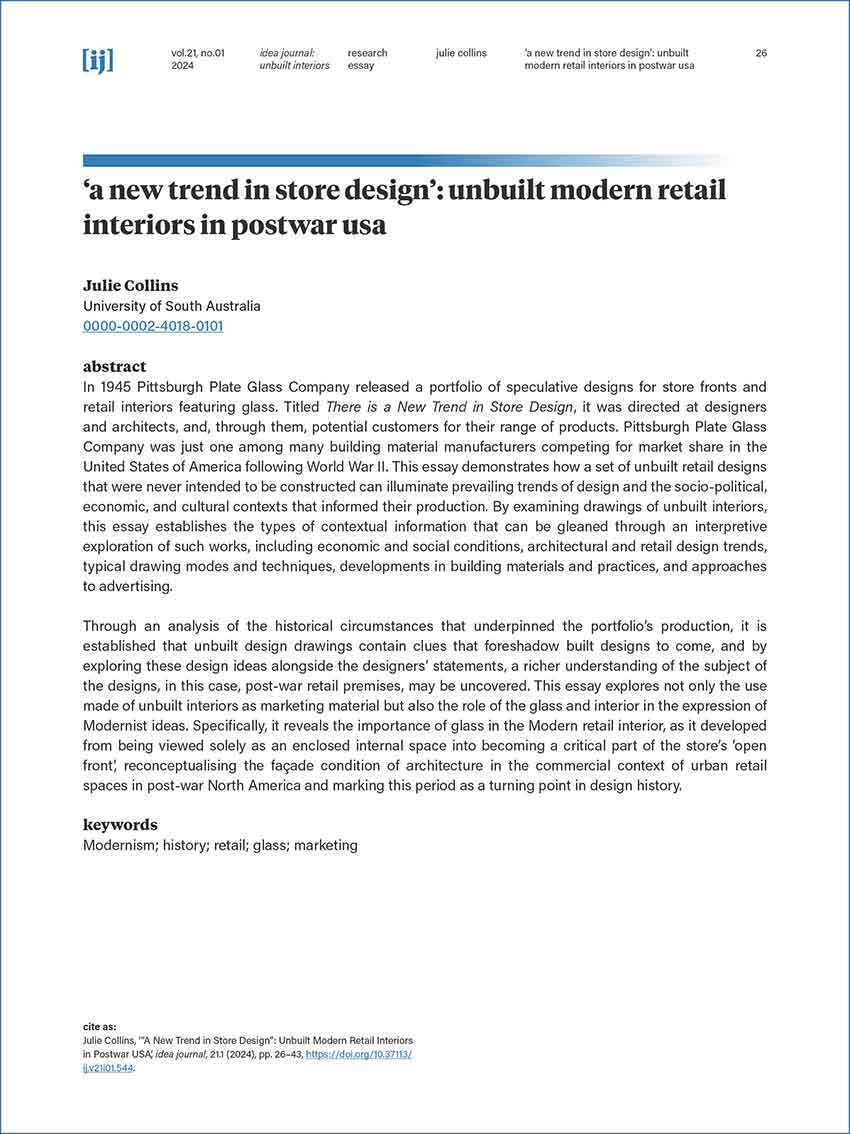‘A New Trend in Store Design’ Unbuilt Modern Retail Interiors in Postwar USA
Main Article Content
Abstract
In 1945 Pittsburgh Plate Glass Company released a portfolio of speculative designs for store fronts and retail interiors featuring glass. Titled There is a New Trend in Store Design, it was directed at designers and architects, and, through them, potential customers for their range of products. Pittsburgh Plate Glass Company was just one among many building material manufacturers competing for market share in the United States of America following World War II. This essay demonstrates how a set of unbuilt retail designs that were never intended to be constructed can illuminate prevailing trends of design and the socio-political, economic, and cultural contexts that informed their production. By examining drawings of unbuilt interiors, this essay establishes the types of contextual information that can be gleaned through an interpretive exploration of such works, including economic and social conditions, architectural and retail design trends, typical drawing modes and techniques, developments in building materials and practices, and approaches to advertising.
Through an analysis of the historical circumstances that underpinned the portfolio’s production, it is established that unbuilt design drawings contain clues that foreshadow built designs to come, and by exploring these design ideas alongside the designers’ statements, a richer understanding of the subject of the designs, in this case, post-war retail premises, may be uncovered. This essay explores not only the use made of unbuilt interiors as marketing material but also the role of the glass and interior in the expression of Modernist ideas. Specifically, it reveals the importance of glass in the Modern retail interior, as it developed from being viewed solely as an enclosed internal space into becoming a critical part of the store’s ‘open front’, reconceptualising the fa.ade condition of architecture in the commercial context of urban retail spaces in post-war North America and marking this period as a turning point in design history.
Article Details
Author/s and or their institutions retain copyright ownership over works submitted to Idea Journal, and provide the Interior Design / Interior Architecture Educators Association with a non–exclusive license to use the work for the purposes listed below:
- Make available/publish electronically on the Idea Journal website
- Publish as part of Idea Journal's online open access publications
- Store in electronic databases, on websites and CDs/DVDs, which comprise of post-publication articles to be used for publishing by the Interior Design / Interior Architecture Educators Association.
Reproduction is prohibited without written permission of the publisher, the author/s or their nominated university. The work submitted for review should not have been published or be in the process of being reviewed by another publisher. Authors should ensure that any images used in their essays have copyright clearance.

